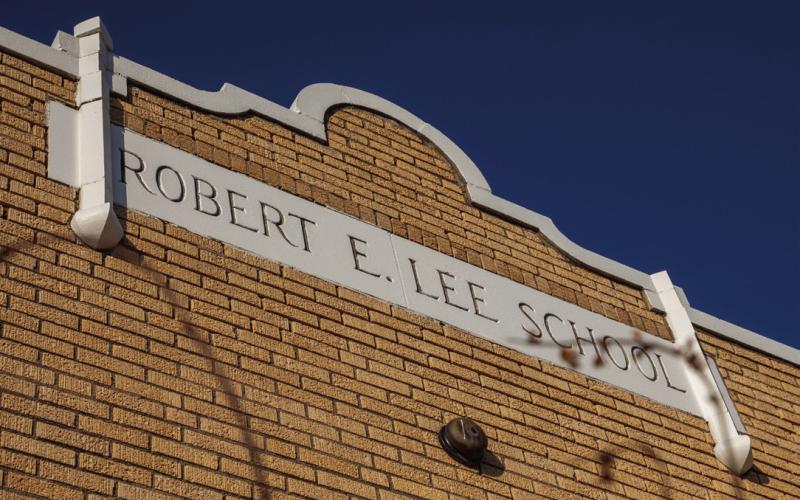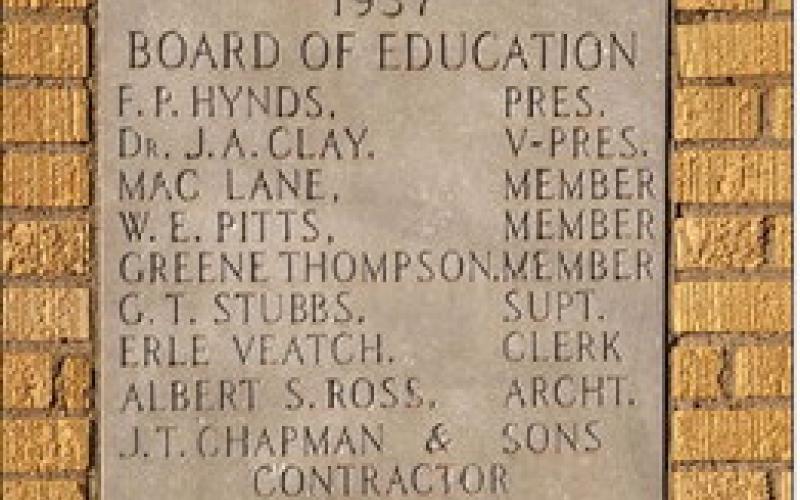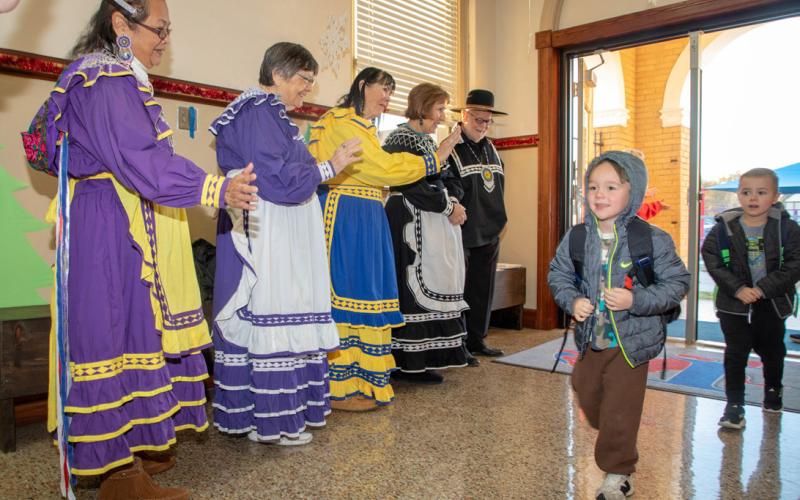“A Durant school teacher, who has been in the teaching service for many years, remained in the building after school was out at the South Ward school Wednesday. After gathering up a few belongings, she walked through the building … She gazed at the broken plastered walls, at the stained ceiling, and possibly shed a tear before she finally left the building for the last time.” Durant Daily Democrat, March 18, 1937 That anonymous teacher was bidding farewell to the massive brick structure that had graced Ninth Avenue for 27 years and was scheduled to be replaced by the “new, modern” school building we know today as the Robert E. Lee Early Childhood Center.
School year 1937-38 was a period of great changes in the Durant school system, but its history verifies that the district was ready for the challenges.
“There were no public free schools nor colleges for children of non-citizens in the Territory until 1898.” (Queen of the Three Valleys, by Henry McCready) The main source of education was subscription schools and private tutoring. Durant created a public school system shortly after it was incorporated in 1898. A tax levy was provided for school purposes in September of 1899 and the first term began with an enrollment of 475. The system was not fully organized until 1901 and the Territory did not become free of the laws of Arkansas until after statehood in 1907. The first school board was elected in 1901: J. O’Riley, M. E. Mackey, W. T. Whitlatch, N. W. Carter, Lewis Paullin, and A. N. Wilcox. C. A. Covington was school superintendent.
The first building constructed in Durant, just before 1900, was near the intersection of West Elm Street and North Ninth Avenue. Soon to follow were the East Ward and South Ward, both “frame buildings.” In just a few years the increase in population created crowded classrooms. By 1907 the school board had purchased the lot adjoining the South Ward building and stated that “later a brick structure will be erected on the site for school purposes.” They also negotiated to rent the Episcopal church to relieve some congestion.
The promised brick structure was completed in October of 1910 by 11 carpenters under the supervision of R. L. Young. It was a two-story with a full-story basement, three entrances, and two large stairways. There was a playground on an adjoining property, but the basement was used during inclement weather. The building faced “Cole Street, or Ninth Ave. at the corner of Louisiana” and took up the width of the entire block. A large brick building was also constructed for the East Ward. But even though the Democrat called them “model buildings” it took a while for that to be true.
One of the Democrat’s editors, accompanied by City Superintendent W. H. Echols and Prof. E. B. Hinshaw, toured each of the city’s four school buildings in December, and while praising the teachers and students, also noted some much-needed improvements.
The South Ward school had 400 students, but no connection to the city sewer. Room had been left in the basement for toilets and the plumbing was roughed in, but the sewer connection was blocks away and the cost of connecting to it was $1,100 (connected in 1914). None of the four school buildings had a furnace or modern ventilation system. All rooms were heated with coal stoves (steam heaters installed in 1911). Lighting was poor. Supplies of books and other items were somewhat limited. The only piano in the whole system was at Central. And parents were urged to send a drinking cup to school with each child so they wouldn’t need to share.
South Ward’s principal was B. W. Bussell. Teachers: Miss Hetty Davies, Miss Cecile Perkinson, Miss Zula O’Riley, Miss Mabel Nolen, Miss Pearl Tarrant, and Mrs. C. Z. Houghton.
Unfortunately, Miss Tarrant’s second-grade class suffered a tragic loss just two months after occupying their new classroom. Nineyear- old Mattie Kempf, running around the corner of the building on her way to recess, collided with a boy and fell onto the cement gutter spout. She didn’t seem to be seriously hurt, so she didn’t report it to the teacher or even to her mother. She continued in school for several days and then became ill enough for a physician to be called. She died of internal bleeding.
The Democrat’s editor not only commented on the condition of the buildings, but also had an opinion about their names. “These are to be designated by the unpretentious names, ‘East Ward’ and ‘South Ward,’ by which the old wooden buildings which they replaced were known.” He thought the names were “too suggestive of the sectional differences in Durant which all harmony-loving citizens are trying to eradicate.” It wasn’t until 1926 that the school board finally agreed with him.
In December of 1926 they decided they should follow the tradition of naming buildings after characters of history or literature. So the school children studied history and voted on three names for each campus. Then the school board chose the appropriate ones: East ward- George Washington South ward- Robert E. Lee North ward- Washington Irving New Central ward- Woodrow Wilson By 1935 Robert E. Lee Elementary was showing its age. Durant voters approved an extra five mill levy with some funds set aside to remodel or rebuild the South Ward school building which was “unsafe for occupancy.” Superintendent G. T. Stubbs applied for matching federal funds to rebuild the school. In 1936 approval was granted by WPA, with $1,200 appropriated to tear down REL. Two shifts of 32 men each, worked diligently to raze the building and save some of the materials.
During the construction period other buildings in town were used as temporary classrooms. Those included: Calvary Baptist Church, the high school gymnasium, Nazarene Church, Washing Irving School, First Methodist Church basement, First Baptist Church.
Students occupied the new $35,000 Robert E. Lee building in December of 1937 and in January of 1938, Stubbs invited everyone to an “open house.”
The Washington Irving PTA helped in the receiving line and visitors were given complete tours of the single-story L-shaped structure. 2:30-4:30 was set aside for programs and speakers. A formal dedication was planned for a future date.
In 1988, the Robert E. Lee building was added to the National Register of Historic Places because of its style and workmanship. It is also significant as a WPA project. Its buff brick, towers topped with Spanish tile, and arched entries give it a “Spanish colonial motif.” The architect was Albert S. Ross.
The interior of Robert E. Lee has been remodeled and improved over the years and now serves as the campus for all of the Pre-K students in the Durant school system. Lisa Whitley is the principal.



